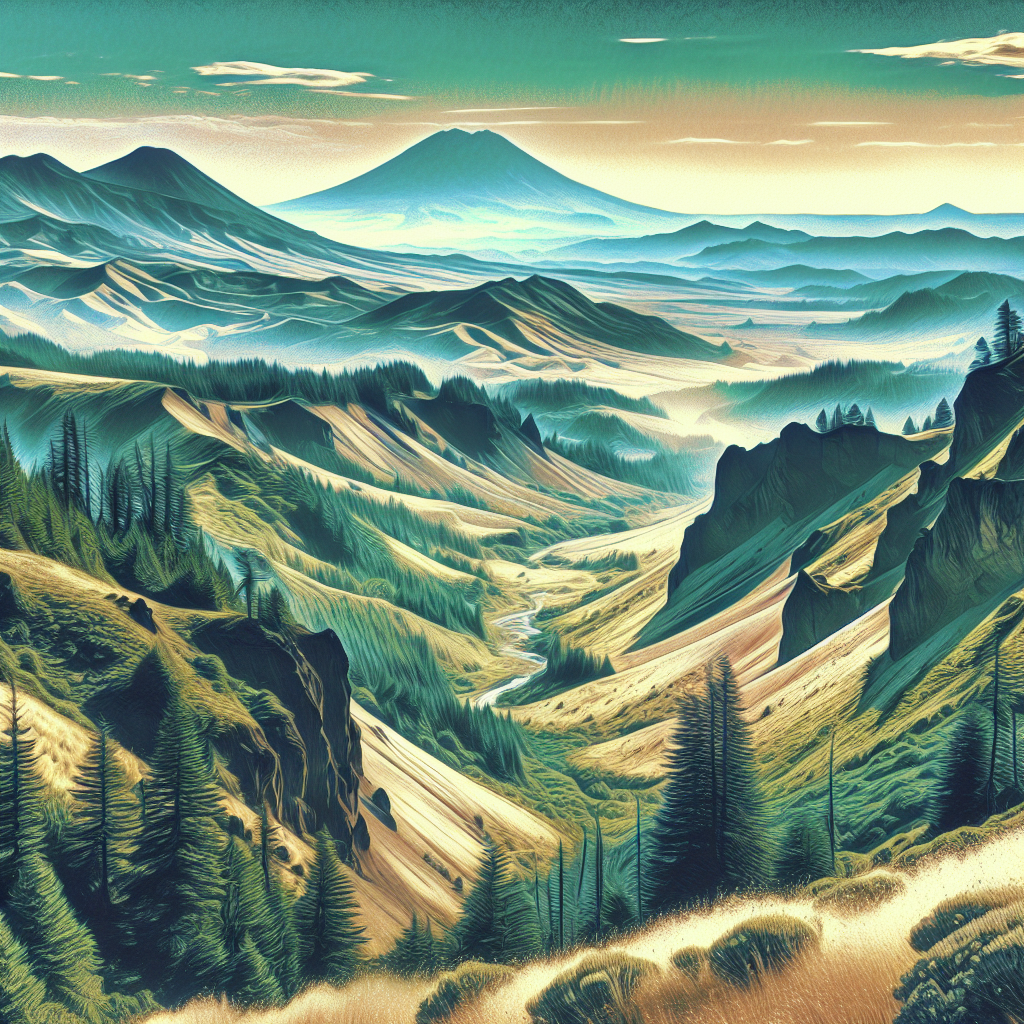Title: “Oregon’s Volcanic History: An Insider’s Tour of the Cascade Range”
Crackling volcanoes, say hello to Oregon. A state peppered with molten fury, Oregon is home to a series of volcanic hotspots that help to tell the story of the world beneath our feet. This rocky adventure through the Cascade Range is the perfect way to marvel at the state’s explosive past while exploring remarkable landscapes you won’t forget.
Section 1: A Geologist’s Winter Wonderland
Winter is the perfect time to begin your volcanic journey with a visit to Mount Hood. An active stratovolcano, this 11,000-foot-tall beauty dominates the Oregon landscape. Winter sports enthusiasts might know it for world-renowned Timberline Lodge, or its excellent skiing, but it’s equally famous for its volcanic heritage. At the right time of year, you might even see steam vents near the top of the mountain, giving you a hint of the simmering activity beneath.

Section 2: Get to Know the Three Sisters
No, not a band or a famous novel, but a trio of spectacular volcanoes South of Mount Hood, near the town of Bend. Faith, Hope, and Charity, as they are locally known, are a must-see on any volcanic tour. Take a hike in the summer months around the base of these peaks, and you’ll come across evidence of their fiery history, from hardened lava flows to pumice fields.
Inside tip: prepare for sudden weather changes in this region. Even on a bright summer’s day, the mountains can often bring quick bouts of rain or hail, so always pack appropriate gear and plenty of water.
Section 3: An Unforgotten Eruption: Mount St. Helens
While technically in Washington State, Mount St. Helens is a sight to behold from the Oregon side of the Columbia River, and serves as a potent reminder of the raw power of nature. The eruption in 1980 reshaped the mountain’s form and holds an unforgettable place in Oregon’s volcanic history. Locals remember where they were when the news hit that St. Helens had blown its top, and the ashfall turned day into night. If you’re visiting in the fall, go to Johnston Ridge Observatory for the best view – just remember that it gets very chilly in the evening.
Section 4: The Sleeping Giant: Newberry Volcano
Round off your volcanic tour in Central Oregon with the often overlooked Newberry Volcano. A trip here provides a fascinating counterpoint to the peaked mountains of the rest of the range. Newberry is a shield volcano, causing it to have a much broader, flatter profile, and it’s considered dormant, not extinct. Two sparkling lakes, Paulina and East Lake, fill the caldera, and there are several hot springs around the base.
One local tip: the roads up to the lakes aren’t open in the winter due to heavy snow, so plan your visit in warmer months. Plus, a summer trip means you can enjoy a refreshing dip in the lakes after exploring!
After this tour, the majesty of Oregon’s volcanic past will be etched into your heart as indelibly as it is into our landscapes. These mountains act as much more than just pretty scenery; they’re integral to Oregon’s identity. They form part of our story, our history, and local folk wouldn’t have it any other way. So, grab your hiking boots and a spirit of adventure to marvel at and explore these mountains that quite literally shook the world.
